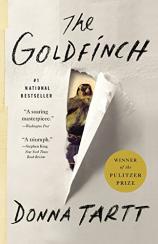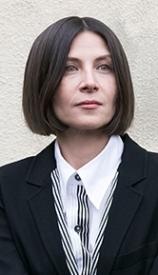Reading Group Guide
Discussion Questions
The Goldfinch

1. Theo’s life revolves around physical objects, but is also dictated by the tragedy of chance. Discuss how these forces shape Theo. Ultimately, is he more a product of manufacture or of fate?
2. Theo’s mother was obsessed with The Goldfinch painting. Is there a piece of art you are similarly connected to or moved by?
3. Reflecting on his mother’s funeral, Theo refers to “the place where words didn’t work” (137). Identify other moments in the novel where language fails.
4. THE GOLDFINCH is obsessed with intertexts --- references to other works of literature, music, film and art (e.g. WALDEN, THE IDIOT, SILAS MARNER, “Spiegel im Spiegel,” The Magnificent Seven, and, obviously, The Goldfinch, to name a few). How do these artistic touchstones inform the novel, especially Theo and Boris’s cultural education in Las Vegas? And how did they enrich, overwhelm or otherwise affect your own reading?
5. The epigraph for Part III states “We are so accustomed to disguise ourselves to others, that in the end, we become disguised to ourselves” (369). How does this message relate to the section’s two short chapters? To the novel as a whole? How do the characters disguise themselves to each other, and why?
6. Good people in the book do bad things; bad people do good. When does a good person become bad, and vice versa?
7. What, if any, were the positives about Theo's father?
8. On p. 415, Hobie says, “What ages wood? Anything you like. Heat and cold, fireplace soot, too many cats --- or [hairspray]…Can you believe it?” By the novel’s end, what ages Theo? Think of contributing forces both traumatic and mundane. How do they transform him? What marks do they leave behind?
9. Apart from Hobie, Pippa and Theo’s mother, most of THE GOLDFINCH’s characters are deeply flawed and/or egomaniacal. Why does Tartt populate the novel with so many antiheroes? Of them --- including Xandra, Kitsey and Mrs. Barbour in the supporting cast --- who is your favorite and why?
10. In your opinion, who was the true hero in this book? Why?
11. To borrow Larry Decker’s “crux of the biscuit” phrase, what is the crux of THE GOLDFINCH? What is your takeaway message or moral from the 771-page sprawl of this “biscuit?"
12. Why was so much time spent describing the drug scenes? Did this detract or add to the book? Why were these scenes necessary?
13. In what ways is the style of Tartt’s storytelling Dickensian?
14. Why The Goldfinch? What does Fabritius’s painting represent --- on its own, as a piece of art, and symbolically, as the focal point of this novel? Think about Theo’s reflection on p.600 --- “To understand the world at all, sometimes you could only focus on a tiny bit of it, look very hard at what was close to hand and make it stand in for the whole.”
15. Give three examples of characters forgiving other characters for things they had done in this story.
16. How do you feel about the final chapter’s meta-narrative turn, in which Theo pivots to address his reader directly? Are his summative philosophic musings helpful or heavy handed? How would you have closed the novel?
17. Some reviews call the book "great literature." What does that mean? Can a new book be great literature?
Questions submitted by ReadingGroupGuides.com readers.
A special thank you to:
Lincoln T. from Brooklyn, NY
MH H. from Tifton, GA
Betsy S. from Glen Ridge, NJ
Alyson W. from Shaker Heights, OH
Christian S. from Kiln, MS
JoAnn C. from Smithtown, NY
Nancy B. from Savannah, GA
Deanne D. from Hillsdale, WI
The Goldfinch
- Publication Date: April 7, 2015
- Genres: Fiction
- Paperback: 784 pages
- Publisher: Back Bay Books
- ISBN-10: 0316055441
- ISBN-13: 9780316055444








